What Is A Cube Net
Overview and Objective
In this activeness, students will explore different nets of a cube while also investigating edge, face up, and vertex backdrop of cubes.
Warm-Up
Start by inserting a cube into a blank canvas from the 3D solids collection of Polypad. Click here to larn more well-nigh using the nets. Talk about the number of foursquare faces, edges, and vertices. You can use the points and lines to highlight the edges and vertices of the cube. Adjusting the transparency of the cube helps students to encounter these details improve.
Utilize the unfold pick to show the net of the cube. Talk nearly this T-shape organisation of six squares every bit just 1 of the possible nets that tin be folded upward to a cube.
Perhaps the most well-known cubes used every 24-hour interval are dice. Ringlet a standard dice using the Polypad dice tool and enquire about the top and the lesser faces of the dice. Students explore that the contrary sides of a standard dice must add up to vii. Utilize this canvass to ask the students to create the net of a standard die using colored squares.
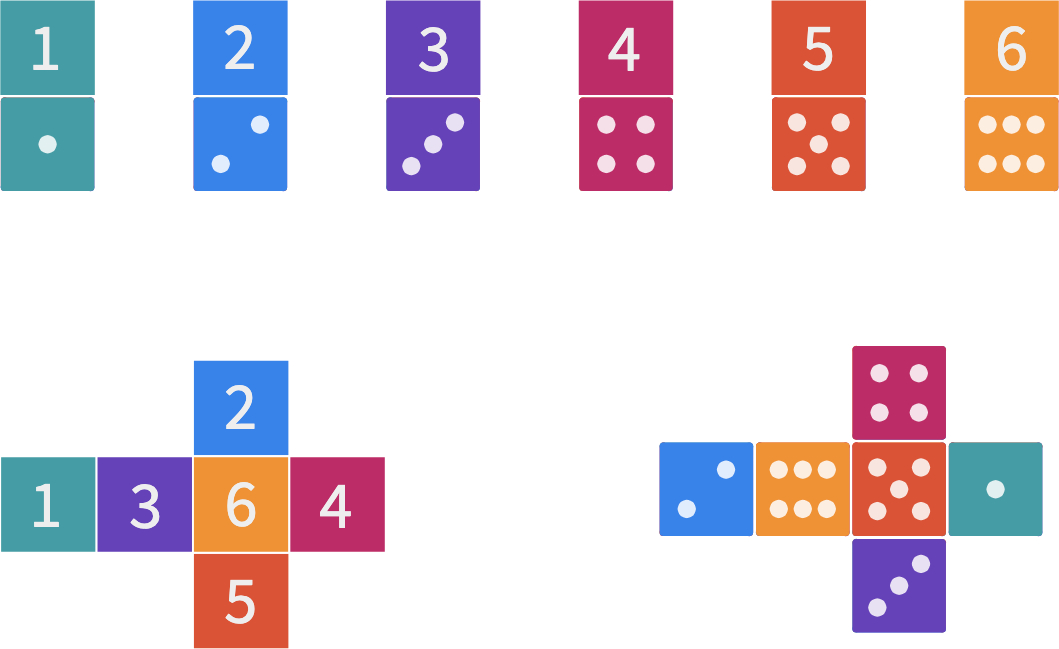
Main Action
A cube has 6 square faces. Enquire students if they recollect that means that any set of half dozen squares can fold up a cube? One of the near well-known nets of a cube is the T shape used in the warm-up to build a off-white dice. What other set of 6 squares can fold up a cube?
Start by showing a rectangular organisation of squares and discuss every bit a class if it is possible to fold it. If the students already knew about tiling and tessellation, you may want to discuss the sum of angles at each vertex is 360 degrees, therefore this organization covers a airplane without gaps and overlaps, and therefore folding is not possible.
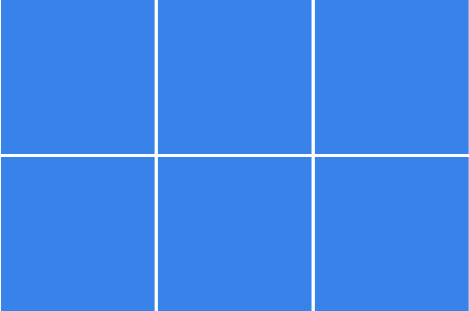
Testify one x 6 rectangular organisation of the squares. You may use different colors for the foursquare faces to testify how some of the faces coincide when folding them upward.
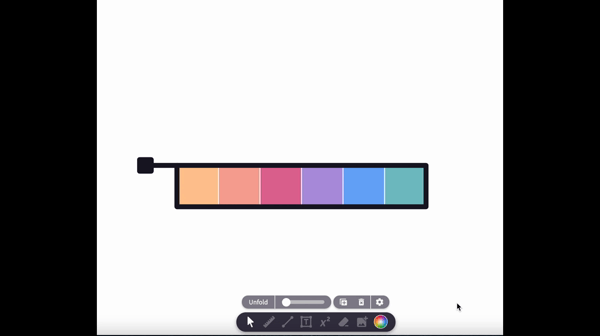
At this point, you may desire to ask students the number of faces that meet at each vertex of the cube. They tin can also compare the T-shape cyberspace with two counterexamples to conclude 3 squares need to meet at a vertex when yous fold the net of a cube.
Identify the students in pairs or groups of three and share this canvas and let them work on which one of these sets fold up to a cube. Alternatively, consider simply asking each grouping to find all possible arrangements of 6 cubes that tin make a cyberspace. If you select this approach, you don't need to share a starting sheet with them.
Ask students to color the contrary faces of the cube the same color. After some work time, share some student piece of work with the form. Utilize the folding the net option to check the coloring.
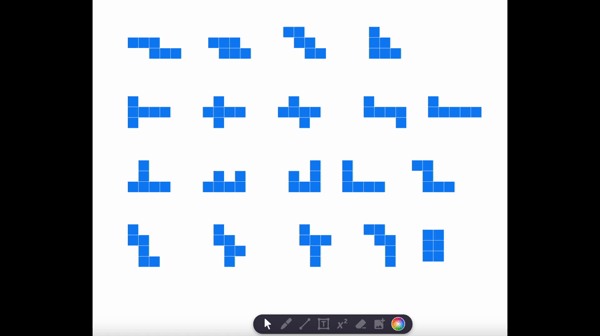
Closure
At the end of the lesson, assign each group a different net to design a standard die. Share some pupil piece of work with the class. Some possible answers hither are;
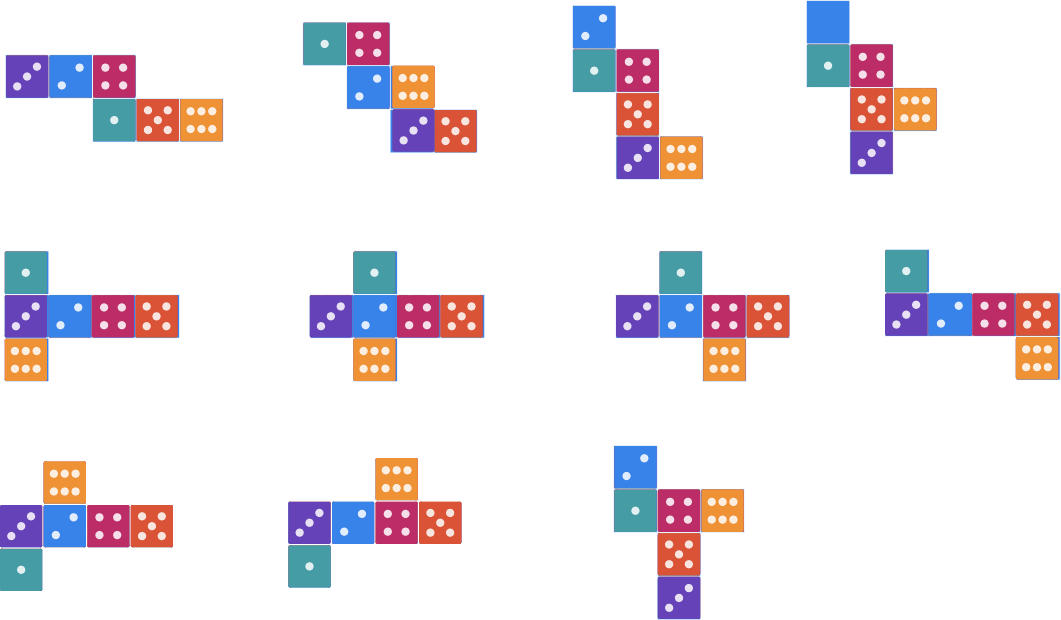
Y'all may likewise end the lesson with a mini-puzzle using this canvas.
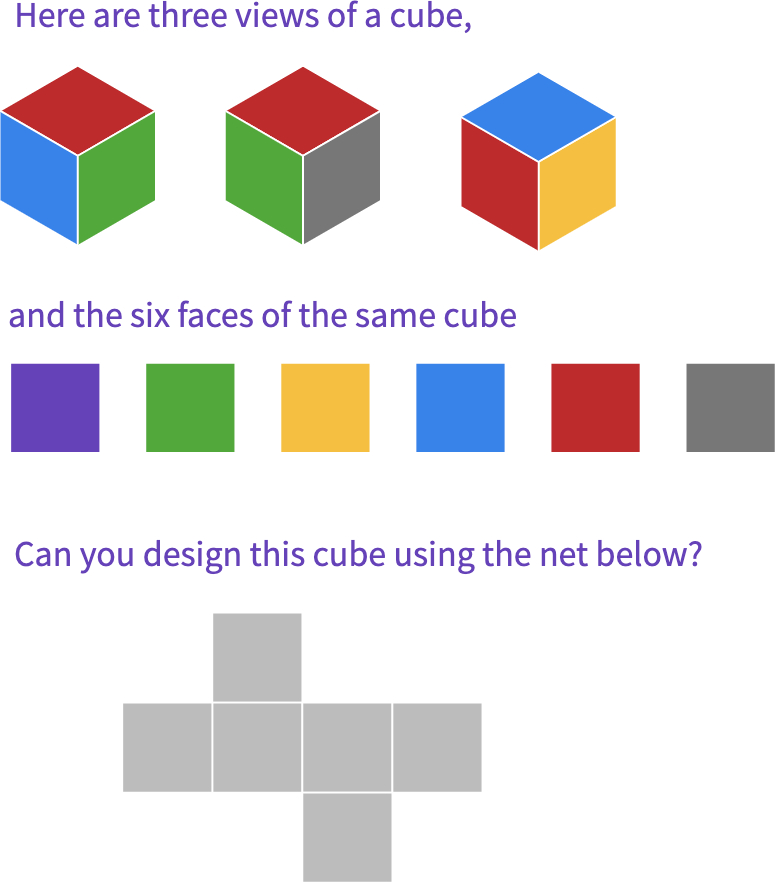
Here is a possible respond.

Back up and Extension
For students needing additional back up, the fold-up option can be used before coloring the reverse faces for some particular nets. For instance, when one t-shape instance is shown, students tin can change the orientation of the caps to create 5 more nets.
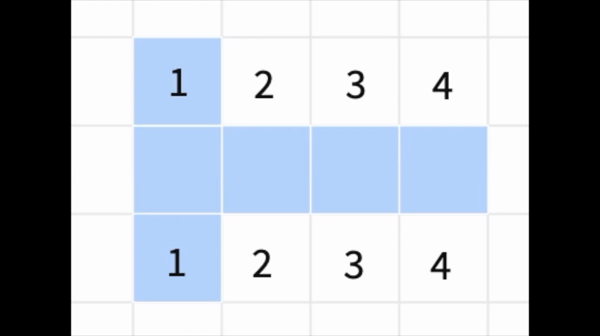
As an extension, consider asking the possible nets of a tetrahedron, and a foursquare pyramid.
Polypad for This Lesson
To assign these to your classes in Mathigon, salvage a copy to your Mathigon account. Click here to larn about saving a Polypad into your business relationship and sharing information technology with your students.
Cubes Warm upwardly – Polypad
http://polypad.org/Avr6Sd3OinGFGg
Nets – Polypad
http://polypad.org/XgEDbT9GrKMIKQ
Cube Puzzles – Polypad
http://polypad.org/67A3eOmbu1j9Q
What Is A Cube Net,
Source: https://mathigon.org/task/nets-of-a-cube
Posted by: lightliess1983.blogspot.com


0 Response to "What Is A Cube Net"
Post a Comment